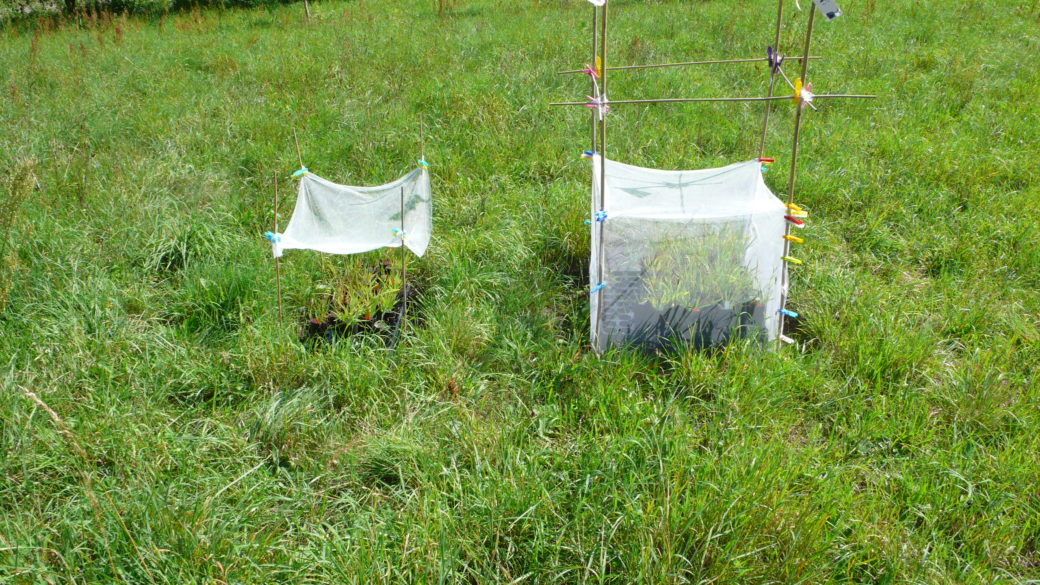The effect of land-use related diversity on plant-soil feedbacks and plant-community coexistence
In soils, many biotic (soil biota) and abiotic (physical, chemical, and biochemical) factors directly and indirectly influence each other and are each in reciprocal interactions with plant roots. Via root exudates, plants alter abiotic soil condition as well as the composition of the soil microbial community. These alterations in turn affect subsequent plant growth and are called plant-soil feedbacks (PSF).

In greenhouse experiments, effects of soil biota on plant growth along a land-use intensity gradient in the exploratories were shown to contribute to plant-species coexistence and biodiversity in grassland ecosystems by influencing plant-species dominance especially in soils of less intensively managed grasslands. However, when comparing feedback effects of soil biota on plant growth under greenhouse and field conditions, we detected in recent experiments consistent differences: In contrast to the greenhouse, there was a generally positive effect of plant diversity on PSFs in the field.
Previous results from the Biodiversity Exploratories show that land-use intensity affects diversity across trophic levels (plants, herbivores, non-AMF soil fungi) with some exceptional groups, however, such as AMF fungi, where diversity was not influenced by land‐use intensity.
In the Biodiversity Exploratories project, we will explicitly test (1) the impact of land-use and land-use related biodiversity on species-specific PSFs directly in the field. By setting up a combined plant-competition and soil-diversity experiment at the different land-use intensities and by experimentally excluding above- and belowground herbivores (see Fig. 1) in a fully factorial design, we will (2) provide mechanistic resolution regarding the impact of land-use-related diversity on the strength and direction of PSFs and thus on plant coexistence and biodiversity in grasslands. We will additionally (3) investigate the individual direct and indirect effects of abiotic factors such as fertilization on PSFs under natural field conditions.
As land-use intensity affects the diversity of plants, as the diversity of plants resulted in positive soil-feedback effects on plant growth in a previous field experiment, and as plant growth affects both abiotic and biotic soil properties, we will investigate in a series of greenhouse experiments (4) the effect and importance of land-use related soil-biota diversity on plant coexistence by testing biotic soil legacy and PSF effects of 75 grassland MIPs screening a large set of common plant species.









